Fire Extinguisher Colours - A Simple Guide
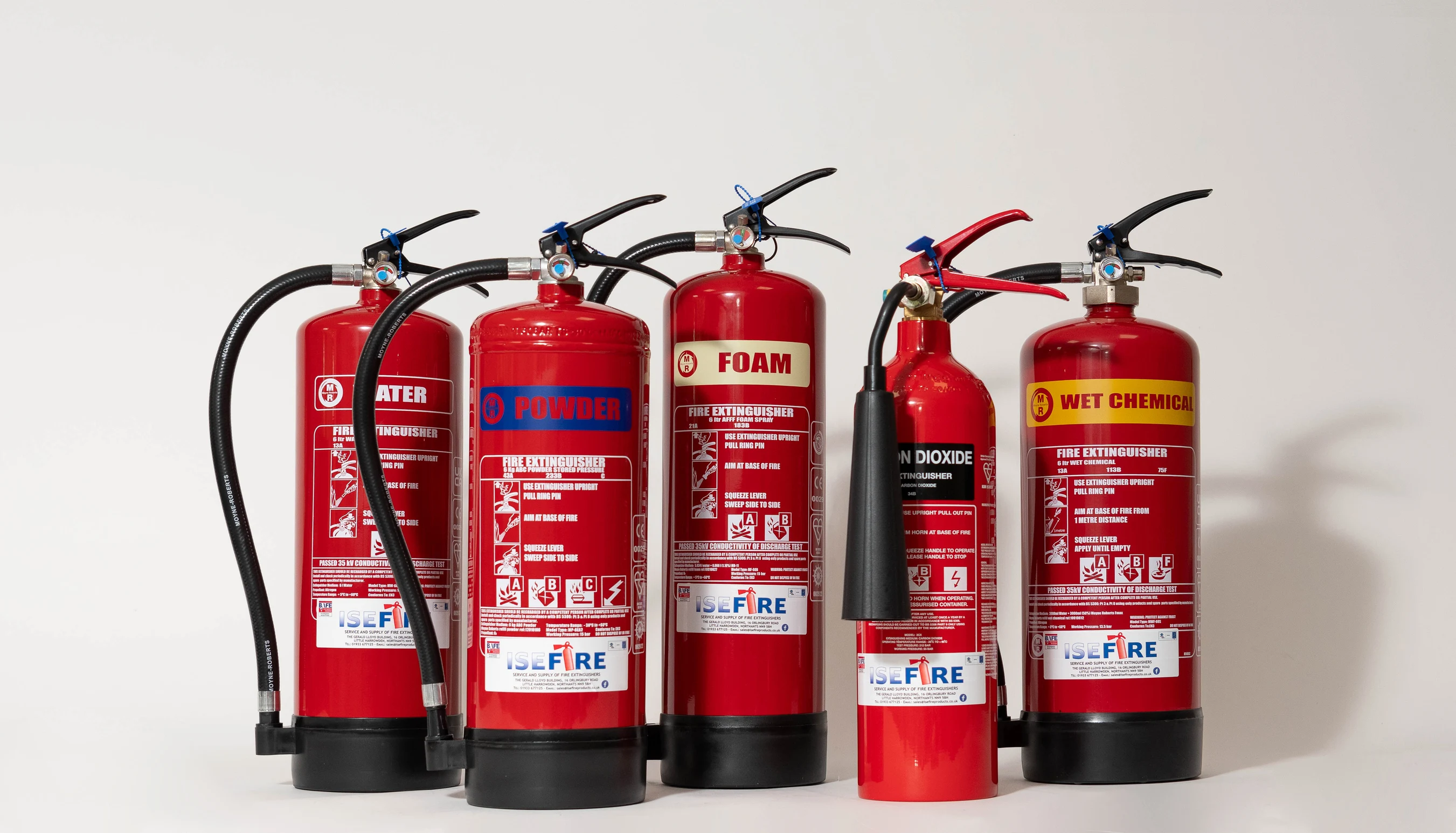
There are 5 fire extinguisher colours: Red, Cream, Blue, Black, and Yellow. We explore the different types of fire extinguisher here in this simple guide.
Each colour fire extinguisher represents a different type of extinguisher, used on the various different types of fires. In the event of a fire, you and your employees are able to identify exactly the type of fire extinguisher required for that type of fire based on the colour label.
We lay out the features of each fire extinguisher below, and which types of fires they are used for.
Red Label Fire Extinguisher
Overview:
Water fire extinguisher, often recognised as the most prevalent choice for combating class A fires, boast a striking red label, making it easily identifiable in emergencies. Businesses typically opt for either water or foam extinguishers, with water extinguishers proving effective against combustible material fires (class A). These extinguishers utilise a cooling effect to penetrate burning materials, preventing reignition. Additionally, they are environmentally friendly, further enhancing their appeal. Wondering about the colour of water fire extinguishers? A distinctive 'signal red' label, ensuring rapid recognition and response in firefighting situations.
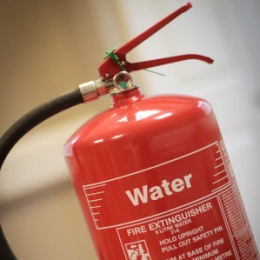
How do water fire extinguishers work?
Water fire extinguishers play a crucial role in fire suppression by generating a cooling effect on the fire's fuel, thereby eliminating the essential heating element required to sustain combustion. This process significantly decelerates the fire's progression, leading to its eventual extinguishment. By disrupting the fire's heat source, water extinguishers effectively quench flames, halting the spread of fire and mitigating potential damage.
Where should you store water fire extinguishers?
When positioning fire safety equipment, such as the red fire extinguisher, it's imperative to adhere to the findings of your latest fire risk assessment. Water fire extinguishers should be strategically placed adjacent to exits within areas designated as class A fire hazards. This proactive approach ensures swift access to firefighting resources in critical situations, enhancing overall safety protocols and emergency response capabilities.
Which type of premises might need water extinguishers?
- Buildings made of wood or another organic material
- Premises storing organic materials, like:
- Office buildings
- Schools and nurseries
- Hospitals
- Domestic dwellings
- Warehouses
To be used on:
-
Paper and Cardboard
-
Fabrics and Textiles
-
Wood and Coal
Not to be used on:
-
Electrical equipment
-
Kitchen fires
-
Flammable gas and liquids
Cream Label Fire Extinguisher
Overview:
Foam extinguisher with it's cream colour label is the most common type of fire extinguisher for Class B fires.
They also work on Class A fires, being water-based, and can be used for fires involving organic materials.
Foam fire extinguishers create a cooling blanket effect, smothering burning materials and preventing reignition of the fire, and are effective for fires from petrol origin.
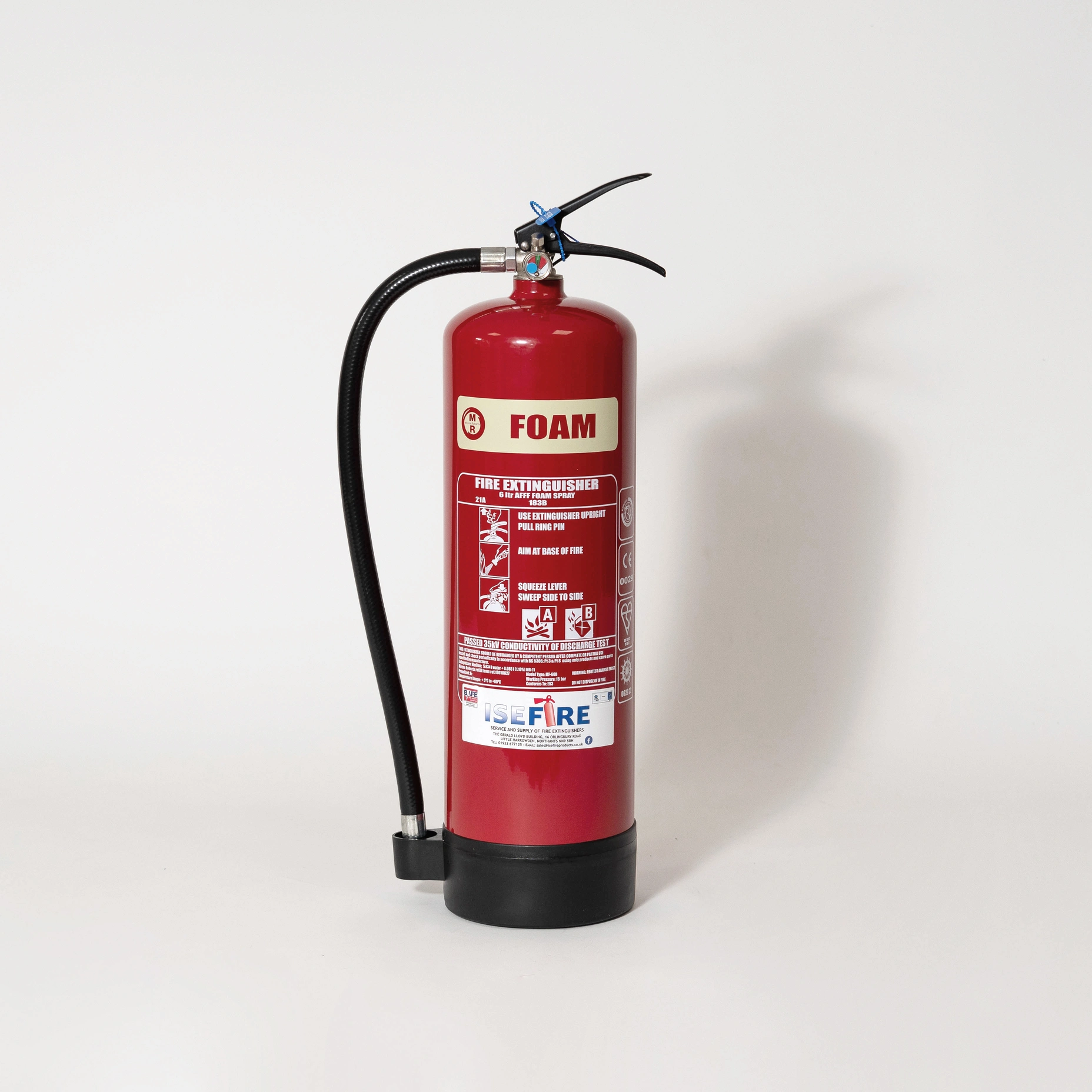
How do foam fire extinguishers work?
Foam fire extinguishers work in two ways - by creating a cooling effect on the fuel that is responsible for causing the fire. Secondly, when this extinguisher is used on burning liquids, the foaming agent inside the extinguisher creates a barrier between the flames of the fire and the fuel, which ultimately extinguishes the fire.
Where should you store foam fire extinguishers?
Foam fire extinguishers should be stored at exit points where either a class A or class B fire risk has been identified.
Which type of premises might need foam extinguishers?
- Buildings made of wood or other organic materials
- Premises where there are organic materials to be found like:
- Office buildings
- Schools and nurseries
- Hospitals
- Domestic dwellings
- Warehouses
To be used on:
-
Paper
-
Cardboard
-
Material
-
Wood
-
Coal
-
Flammable liquids - petrol, paint and turpentine
Not to be used on:
-
Kitchen fires
-
Electrical fires
-
Flammable metal fires
Blue Label Fire Extinguisher
Overview:
The blue label dry powder extinguishers are sometimes called ‘ABC’ extinguishers because they are used on class A, B and C fires, and can be utilised in environments containing multiple fire risks. The blue fire extinguisher shouldn’t be used in enclosed spaces because the powder can be easily inhaled and the residue is very difficult to clean.
Standard dry powder extinguishers can be used on some electrical fires, plus specialist dry powder extinguishers are used for fires involving flammable metals, and are ideal for use as vehicle protection. Specialist dry powder extinguishers are only used on flammable metals, such as titanium and magnesium.
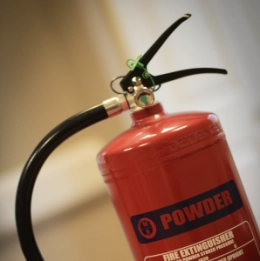
How do powder fire extinguishers work?
The blue fire extinguisher, which contains dry powder, is used for extinguishing fires by separating the fuel from the oxygen element or by removing the heating element of the fire triangle. This makes it effective in dealing with various types of fires.
Where should you store powder fire extinguishers?
When considering where to store powder fire extinguishers, it's crucial to position them close to the potential source of fire risk. This strategic placement ensures that in the event of a fire, the extinguisher is readily accessible for immediate use. It's important to remember that the accessibility and visibility of the extinguisher are key factors in effective fire safety management.
Which businesses might need dry powder extinguishers?
- Businesses who regularly use flammable gases
- Locations where flame cutting or welding is carried out
- Garage forecourts
- Buildings with large boiler rooms
To be used on:
-
Organic materials such as: Paper, Cardboard, Material, Wood, Coal
-
Flammable liquids - petrol, paint, turpentine
-
Flammable gases - liquid petroleum gas (LPG), acetylene
-
Electrical fires
Not to be used on:
-
Cooking oil /chip-pan fires
-
Enclosed spaces, such as offices or domestic dwellings
Black Label Fire Extinguisher
Overview:
Fire extinguishers with a black label, known for containing CO2, are specifically used for electrical fires. They are notably prevalent in areas with sensitive equipment, such as computer server rooms, due to their effectiveness and safety on electrical components.
In addition to their primary role, the black label fire extinguishers also tackle Class B fires, which involve flammable liquids. Their non-toxic nature and absence of residue make them safe for use around machinery and electrical equipment, ensuring no damage while extinguishing fires.
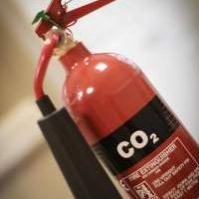
How do CO2 fire extinguishers work?
A CO2 fire extinguisher works by suffocating the fire with CO2, which causes the oxygen to be displaced and the fire to burn out.
Where should you store CO2 fire extinguishers?
CO2 fire extinguishers should be stored next to the source of the fire risk and/or by the nearest fire exits.
Who might need CO2 extinguishers?
- Premises with electrical equipment, like:
- Office blocks
- Commercial kitchens
- Server rooms
- Building sites
To be used on:
-
Fires involving electrical equipment
-
Flammable liquids, like paint, petrol & turpentine
-
Small flammable liquid fires
Not to be used on:
-
Kitchen fires or chip-pan fires
-
Organic materials like paper, wood, cardboard or fabric
-
Flammable metals
Yellow Label Fire Extinguisher
Overview:
Wet chemical extinguishers with yellow labels are specialist extinguishers, designed for use on fires involving cooking oils and fats (‘Class F’ fires).
They can be used on Class A fires, although businesses usually have a foam or water extinguisher for this purpose.
Wet chemical extinguishers can also be used for fires caused by various organic materials including wood, coal, textiles, fabrics, cardboard and paper.
Wet chemical fire extinguishers are the ideal extinguisher for fires involving fat or cooking oil.
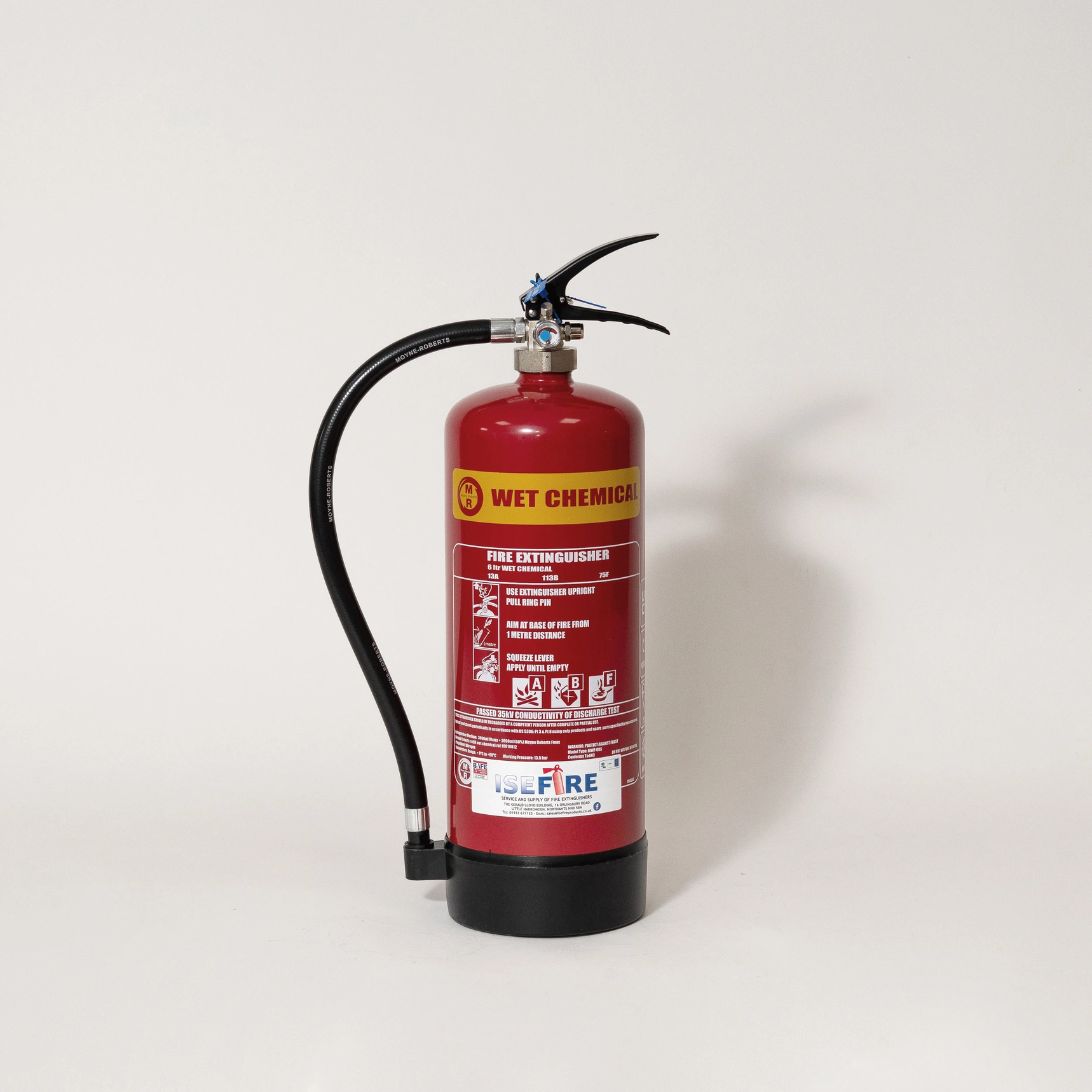
How do wet chemical fire extinguishers work?
The yellow fire extinguisher works by creating a layer of foam on the surface of the burning oil or fat that starves the fire of oxygen. The spray itself contains the chemical potassium, which also has a cooling effect that helps to eliminate the fire.
Where should you store chemical fire extinguishers?
Wet chemical fire extinguishers should be stored next to the source of the fire risk.
Which businesses might need yellow chemical extinguishers?
- Professional kitchens
- Chippies
- Restaurants
- Canteens
- Other hospitality establishments
To be used on:
-
Chip-pan and cooking fat fires
-
Organic materials like: Paper, Cardboard, Material, Wood, Coal
Not to be used on:
-
Flammable liquid or gas fires
-
Electrical fires
-
Fires involving flammable metals
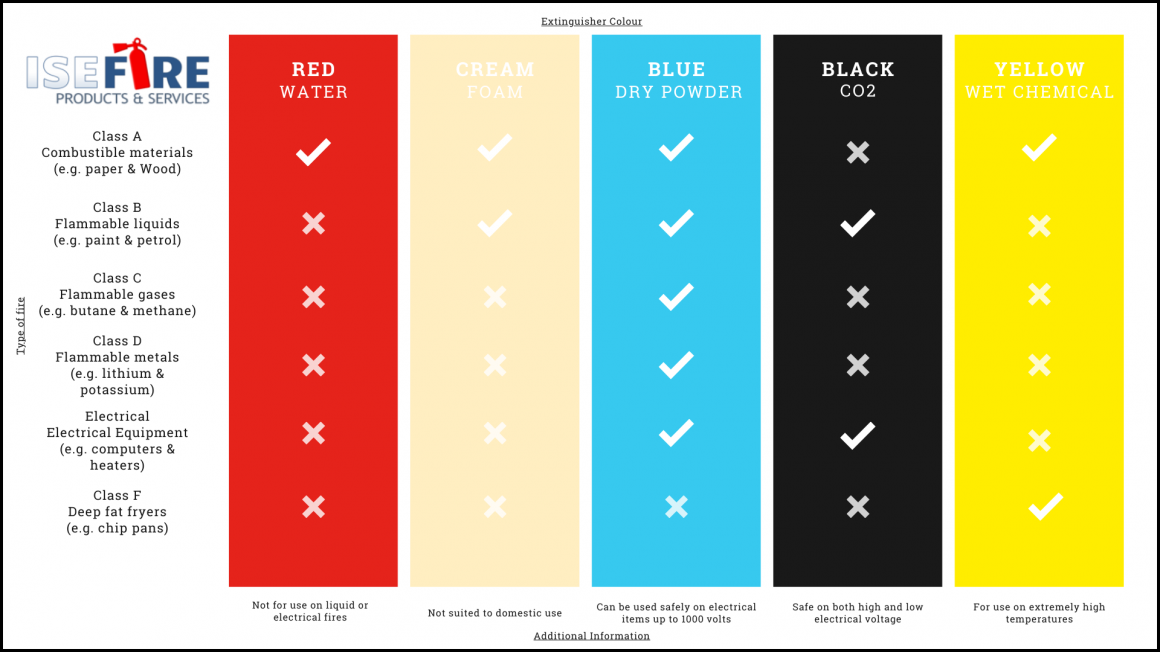
We hope this guide to fire extinguisher colours has been helpful.
If you have questions, get in touch to talk through the needs of your business.
Call us on 01933 677125 or fill in the quick online form to discuss your Fire Safety needs today!
Index